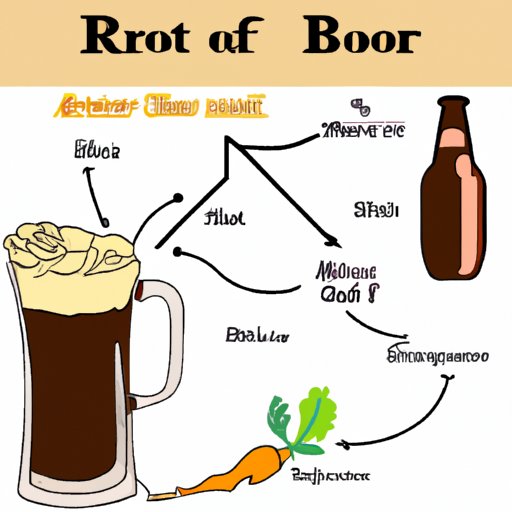Why Is It Called Root Beer? Exploring the Historical, Cultural, and Botanical Roots of a Beloved Beverage
Root beer. It’s a beloved beverage that has been enjoyed for generations. But have you ever stopped to wonder why it’s called root beer? What’s in it that’s so root-y? In this article, we’ll explore the historical, cultural, and botanical roots of this iconic drink, taking a deep dive into the ingredients and flavors that make it so unique.
Historical Roots
Root beer has a long and fascinating history, dating back centuries to indigenous peoples who brewed a type of tea using roots, herbs, and barks. When European settlers arrived in the Americas, they adapted these recipes, adding new ingredients to create a drink that was both refreshing and medicinal. It wasn’t until the 1800s, however, that root beer as we know it today was born.
The drink was initially marketed as “root tea” and various roots, including sarsaparilla, sassafras, and birch, were used to infuse the drink with flavor and health benefits. These roots were often combined with other herbs, such as wintergreen and licorice, to give the beverage its characteristic taste.
Over time, as the popularity of the drink grew, it became known as root beer, reflecting the primary infusion of roots used to make the beverage.
Cultural Context
Root beer has played an important role in American food history, becoming a staple beverage at picnics, barbecues, and even in soda fountains. According to some accounts, the drink gained popularity during Prohibition when people could no longer purchase alcoholic beverages and turned to root beer as a substitute.
Root beer has also become associated with summer gatherings, like parades and fairs, and is often served in frosted mugs or in ice cream floats. The drink has become a symbol of American culture and is enjoyed by people of all ages.
Botanical Breakdown
To understand why root beer is called root beer, it’s important to examine the ingredients that are used to make it. The primary roots that are typically used to create root beer are sarsaparilla, sassafras, and birch.
Sarsaparilla root has a sweet and slightly spicy flavor and is often used to make traditional “old-fashioned” root beer. Sassafras root, which has notes of vanilla and cinnamon, was once a primary component of root beer, but is now banned for commercial use due to concerns over potential health risks. Birch bark is another common ingredient, contributing a slightly minty flavor to the drink.
In addition to these roots, other herbs and spices are often used to create the distinctive flavor of root beer. These can include wintergreen, licorice, anise, and clove.
Evolution of Flavor
Over the years, root beer has evolved to suit changing tastes and preferences. In the early 1900s, manufacturers began using artificial flavorings to recreate the taste of sassafras root, which was banned in 1960 due to the presence of safrole, a potentially carcinogenic compound.
Today, root beer can come in a variety of flavors, ranging from traditional to more modern variations, such as ginger or birch beer. Reginald Gray, a food historian and author, notes, “People want to try new, complex, and exciting beverages, and the many businesspeople marketing and producing root beer satisfy this demand with multiple flavor options.”
Marketing Maneuvers
The marketing of root beer has played a key role in its popularity and name recognition. Some companies have carefully cultivated a sense of nostalgia around their brand, using retro packaging and advertisements to evoke a sense of Americana.
Other companies have focused on health and wellness, touting the supposed medicinal properties of root beer’s natural ingredients. In reality, there is little scientific evidence to support these claims, but they remain a popular part of the drink’s lore.
Myth and Legend
Like many popular drinks and foods, root beer has generated its fair share of myths and legends. Some people believe that the drink has mystical properties, with roots that can heal the sick or improve cognitive function.
Others have speculated that root beer was once used as a secret code among members of the underground railroad. According to this theory, “root beer” was a signal to slaves that they could safely hide in a “root cellar” on their journey to freedom. While there is little historical evidence to support this claim, the story has persisted and remains a fascinating part of root beer’s history.
Conclusion
So why is it called root beer? The answer, as we’ve explored in this article, is rooted in a long and complex history that spans centuries and cultures. Root beer has evolved over time, adapting to changing tastes and preferences, but it has remained a beloved drink that epitomizes American culture and tradition.
Whether you prefer old-fashioned root beer or a more modern variation, it’s clear that there’s something special about this iconic beverage. So the next time you take a sip of root beer, remember its fascinating origins and the many cultural and botanical roots that make it so unique.
